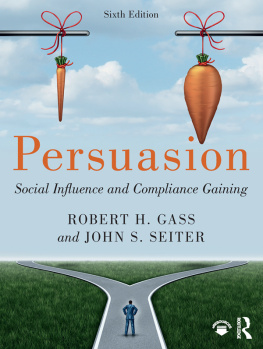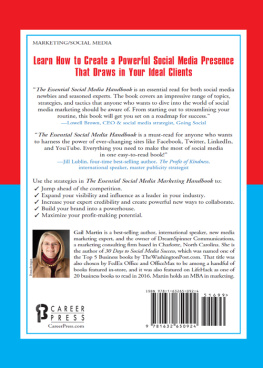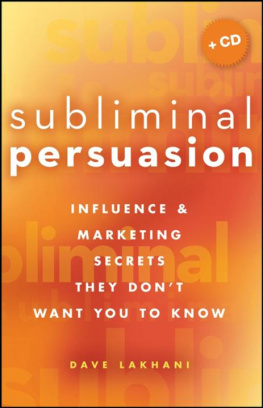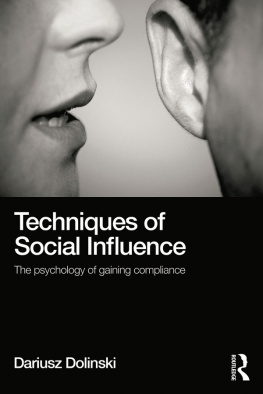
Persuasion
Now in its sixth edition, Persuasion: Social Influence and Compliance Gaining continues to boast an accessible voice and vibrant aesthetic that appeals to undergraduate students of communication, psychology, advertising, and marketing. In addition to presenting established theories and models, this text encourages students to develop and apply general conclusions about persuasion in real-world settings. Along the way, students are introduced to the practice of social influence in an array of contexts (e.g., advertising, marketing, politics, interpersonal relationships, social media, groups) and across a variety of topics (e.g., credibility, personality, deception, motivational appeals, visual persuasion). The new edition features an expanded treatment of digital and social media, up-to-date research on theory and practice, and enhanced discussions of topics such as political campaigning, emotional marketing, olfactory influence, and ethics. Instructors can also use the books downloadable test bank, instructors manual, and PowerPoint slides in preparing course material.
Robert H. Gass is Professor Emeritus of Communication Studies at California State University, Fullerton, USA.
John S. Seiter is Professor in the Department of Languages, Philosophy, and Communication Studies at Utah State University, USA.
Persuasion
Social Influence and Compliance Gaining
Sixth Edition
Robert H. Gass
John S. Seiter
Sixth edition published 2018
by Routledge
711 Third Avenue, New York, NY 10017
and by Routledge
2 Park Square, Milton Park, Abingdon, Oxon, OX14 4RN
Routledge is an imprint of the Taylor & Francis Group, an informa business
2018 Taylor & Francis
The right of Robert H. Gass and John S. Seiter to be identified as authors of this work has been asserted by them in accordance with sections 77 and 78 of the Copyright, Designs and Patents Act 1988.
All rights reserved. No part of this book may be reprinted or reproduced or utilized in any form or by any electronic, mechanical, or other means, now known or hereafter invented, including photocopying and recording, or in any information storage or retrieval system, without permission in writing from the publishers.
Trademark notice: Product or corporate names may be trademarks or registered trademarks, and are used only for identification and explanation without intent to infringe.
First edition published by Pearson Education, Inc. 2002
Fifth edition published by Routledge 2016
Library of Congress Cataloging in Publication Data
Names: Gass, Robert H., author. | Seiter, John S., author.
Title: Persuasion : social influence, and compliance gaining /
Robert H. Gass, John S. Seiter.
Description: Sixth edition. | New York, NY : Routledge, 2018.
Identifiers: LCCN 2017042512| ISBN 9781138630598 (hardback) |
ISBN 9781138630611 (pbk.)
Subjects: LCSH: Persuasion (Psychology) | Influence (Psychology) |
Manipulative behavior.
Classification: LCC BF637.P4 G34 2018 | DDC 153.8/52dc23
LC record available at https://lccn.loc.gov/2017042512
ISBN: 978-0-8153-5821-3 (hbk)
ISBN: 978-1-138-63061-1 (pbk)
ISBN: 978-1-315-20930-2 (ebk)
Typeset in Sabon
by Florence Production Ltd, Stoodleigh, Devon, UK
Visit the eResource: www.routledge.com/9781138630611
To Banjo and Julep, my two English Setters, who keep me company when Im writing at home.
Bob Gass
To Miss Gordon, my second-grade teacher, for knowing that self-concept is the proper starting place.
John Seiter
To our familiesSusan, Jordan, Graham, Debora, Dean, Andy, and Christianfor doing without us when we were writing and for putting up with us when we werent.
Robert Gass and John Seiter
Contents
P ERSUASION CONTINUES TO OCCUPY the attention of academics and nonacademics alike. Not only scholars, but practitioners such as advertisers, lawyers, lobbyists, marketing firms, motivational speakers, politicians, public relations experts, social activists, syndicated columnists, and others have a vested interest in knowing how persuasion works. Therefore, students who aspire to careers in any of the people professions would be wise to acquire a basic understanding of how persuasion functions.
With each edition of this text, we marvel at how much persuasion changes over time, yet still remains the same. For example, controversies over fake news have altered the way people perceive facts and assess source credibility. Even so, credibility remains as central to the process of persuasion as ever. It is perceived credibility that counts. The credibility of news sources is in the eye of the beholder.
The observation that the more persuasion changes, the more it remains the same applies to almost every aspect of persuasion. Compliance-gaining strategies such as the foot in the door now occur in online settings. Audience analysis is key to persuasion, but rather than examining demographic data, persuaders can now use microtargeting to tailor their messages to niche groups. For example, in the 2016 presidential election, rumors swirled that Cambridge Analytica, a company that specializes in opinion mining and data analysis, identified low-information voters in key swing states and bombarded them with highly targeted messages (Confessore & Hakim, 2017). Product placement, once only found on television and in movies, is now prevalent in novels, pop music, and virtual environments such as computer games. Fear appeals, long a staple of persuaders, have moved online. In addition to being fearful of Ebola, terrorism, and clowns, we can now be worried about cyberstalking, cyberbullying, and whatever diet and nutrition advice Gwyneth Paltrow is about to post.
In this edition, we address the increasing importance of digital and online persuasion, while emphasizing the importance of traditional forms of persuasion as well. Since the last edition, digital persuasion has come into its own. On social media, pop-up ads and banners have given way to more sophisticated forms of marketing, such as webtracking (Avergin, 2016). Using third-party cookies, canvas fingerprinting (Kirk, 2014), and other techniques, Web marketers can follow users activities across websites. Like a bluegrass video on YouTube, follow a fiddle player on Facebook, or post some banjo pictures on Instagram, and youll start getting messages about hoedowns and honky-tonks in your area.
Persuasion on the Web also relies on sentiment tracking or opinion mining. For example, using natural language processing software, millions of tweets can be analyzed to see what topics, people, or brands are trending and what emotion-laden words or emojis are being used in connection with those topics or issues. Insights about political preferences, brand images, and economic trends can be gleaned from the results. As Bannister (2015) noted, shifts in sentiment on social media have been shown to correlate with shifts in the stock market (para. 3).
The widespread use of mobile technology has also been accompanied by increasing apps and techniques designed to influence. Texting, tweeting, and other apps disseminate word-of-mouth (WOM) messages. WOM is perceived by many as more genuine, authentic, and trustworthy than commercial advertising or expert opinions. Of course, marketers can sneak into these conversations via sponsored tweets and promoted posts. In many ways, social media has become a form of
Next page












